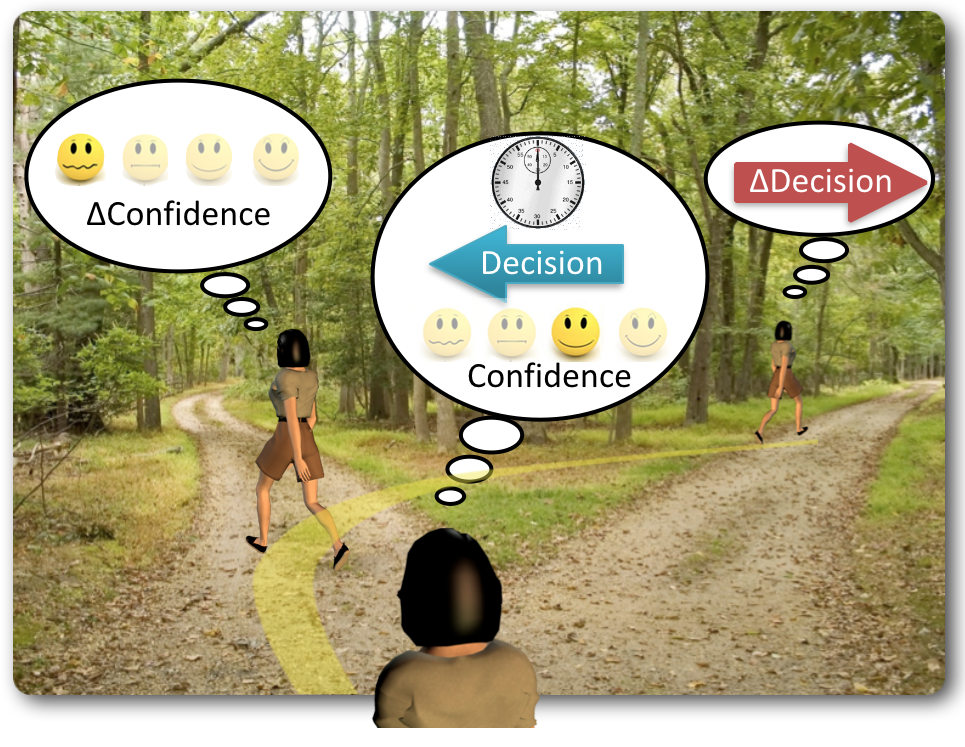Up to now, these two fields have evolved in parallel. An aim of our research program is to understand the link between decision making processes and sensorimotor processes (Wolpert and Landy, 2012).
We have developed models that explain how subjects change their mind about target selection during an ongoing movement (Resulaj et al., 2009). Recently, we have shown that a sequential sampling model can provide a unifying explanation of initial decisions, confidence and decision time with changes of confidence and decisions during the ensuing movement (van den Berg et al., 2016). We have also shown how confidence in one decision can affect the parameters that underly subsequent decisions (van den Berg et al., 2016), providing a new role for confidence. Skilled performance also requires the efficient gathering and processing of sensory information relevant to the given task.
Active sensing involves using the motor system to sample the sensory world and we have developed information theoretic models of active sensing that have allowed us to quantify the impressive efficiency of the motor system in extracting abstract information (Yang et al., 2016; Yang et al., 2016).

